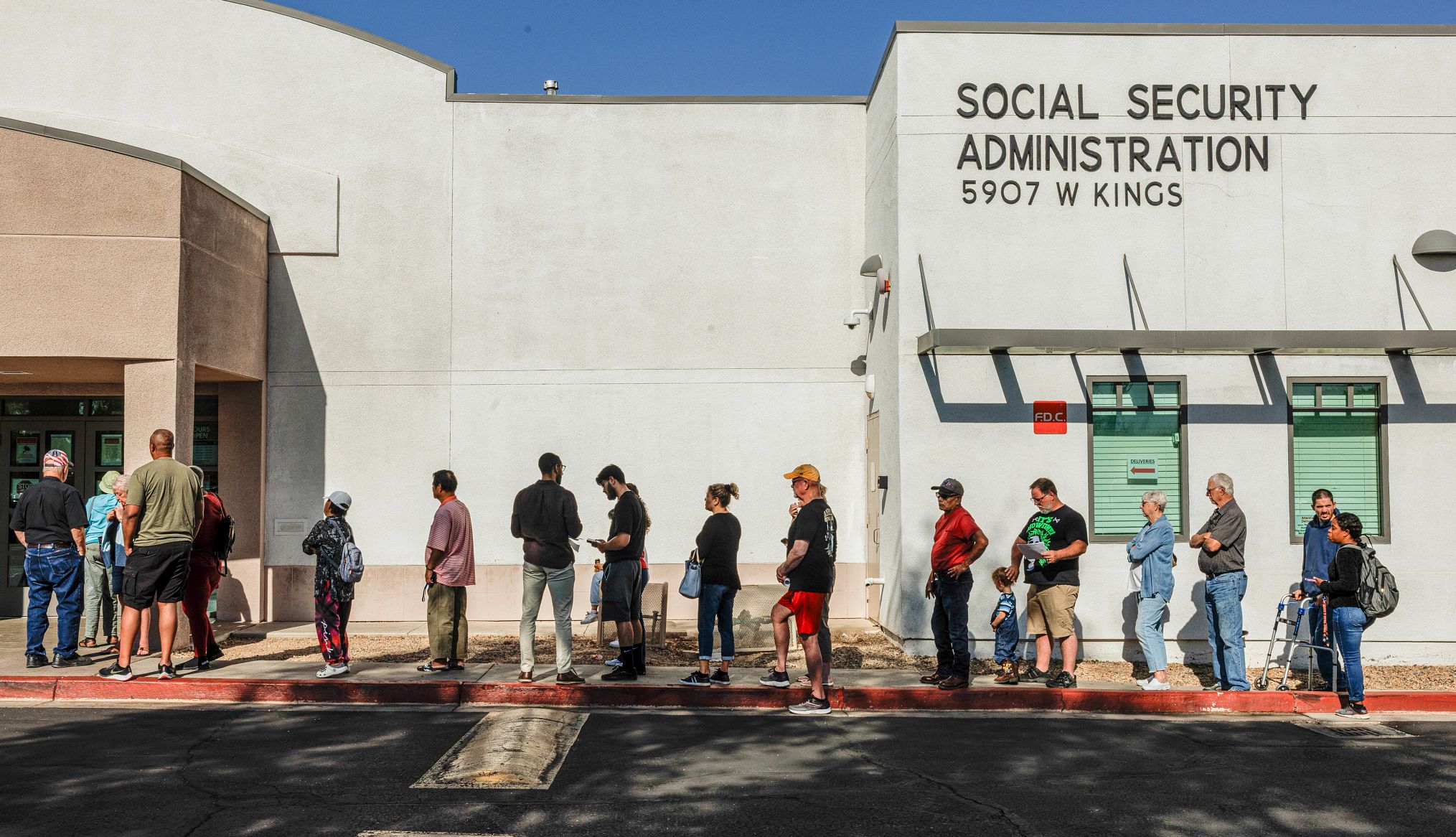
Nearly 2,000 social security workers leaving field offices
- Select a language for the TTS:
- UK English Female
- UK English Male
- US English Female
- US English Male
- Australian Female
- Australian Male
- Language selected: (auto detect) - EN
Play all audios:

Amid surging complaints about Social Security customer service, 40 of the program's local offices are set to lose a quarter or more of their employees as Social Security Administration
(SSA) buyouts take effect this month. The agency is aiming to shed about 7,000 jobs, reducing its workforce to 50,000. The agency says 2,500 workers have requested and been confirmed
eligible for “voluntary separation incentive payments” of $15,000 to $25,000 and will leave their jobs by April 19. Of that group, at least 1,962 — nearly 80 percent — work in field offices
directly serving the public. According to SSA data, 40 of the agency’s approximately 1,200 field offices have a staff loss rate of at least 25 percent. Eleven offices are losing a third or
more of their workers, and three — in Wisconsin Rapids, Wisconsin; Nevada, Missouri; and Alexandria, Minnesota — will see at least half their staff depart. “We are actively working to
provide targeted support to the most affected field offices,” including by direct hiring, workload sharing, and reassigning and relocating employees, the SSA said on a “Workforce Update”
page on its website that was live as of April 7 but has since been taken down. About 1,060 workers who volunteered for reassignments within Social Security are being shifted “to the
mission-critical offices in most need of staffing resources," the page said. ‘CHAOTIC ENVIRONMENT’ AARP has long called on Congress to provide sufficient resources for Social Security
to address chronic customer service issues. In an April 7 letter to acting SSA Commissioner Leland Dudek, Nancy LeaMond, AARP's chief advocacy and engagement officer, cited reports of
website outages, long lines at field offices and lengthy waits to get help by phone as signs of a “deepening” crisis at the agency. JOIN OUR FIGHT TO PROTECT SOCIAL SECURITY You’ve worked
hard and paid into Social Security with every paycheck. But recently, we've heard from thousands of Americans who want to know more about the future of Social Security. Here’s what you
can do: “This chaotic environment is fueling fear and concern among many older Americans,” she wrote. “We are deeply troubled by the startling and sudden decline.” In January, the SSA began
requiring people to call ahead to schedule an appointment for most in-person services, including benefit applications. According to agency data, people calling the SSA’s national toll-free
helpline (800-772-1213) in March waited an average of 1 hour and 39 minutes to speak to a live representative or 2½ hours to hear back if they selected the callback option. The rate of
callers receiving a prerecorded disconnect message when trying to reach a representative, which was 0 percent through most of 2024, leaped to 28.4 percent last month. Those who do get
through to schedule a visit can still face long waits. The SSA reports that more than half of people seeking an appointment to apply for retirement benefits, survivor benefits or Medicare
could not get one within 28 days.
